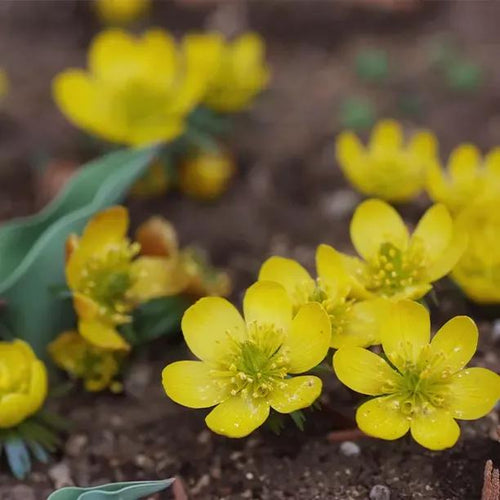Winter Flowering Aconite Bulbs
Winter Aconites are among the earliest flowering bulbs. Aconites form a carpet of waxy, golden buttercup-like flowers from January onwards.
Winter Aconites in the Green are grown in the UK specifically for the purpose of being lifted and sold while in growth, during Spring.
Dry bulbs are planted in Autumn.
Browse all bulbs in the green, or all flower bulbs.
Features
- Colour: Gold
- Height: 30cm
- Flowering: Jan-Feb-Mar
- Sold in the green for immediate planting.
- RHS Plants for Pollinators
Growing Winter Aconites
They grow best in fairly moist ground containing plenty of organic matter that doesn't get parched dry in Summer.
Garden Design Ideas
Very few plants thrive in the shade of horse chestnut and sycamore trees. Aconites and Snowdrops get their growing done while the deciduous trees above are dormant and without leaf.
History & Trivia
Eranthis hyemalis is a member of the buttercup family - the relationship can be seen in the flowers and leaves. Hyemalis means "winter-flowering". Other common names include winter hellebore and winter wolf's bane, to match their namesakes, the Aconites (its previous botanical name was Aconitum hyemale), which are also in the buttercup family, but in a different genus.
Like many bulbs and tubers, aconites are absolutely not for human consumption, but you might need to protect them against thieving squirrels.

 Secure, One-Tap Checkout
Secure, One-Tap Checkout
 Hand Picked, Delivered to Your Door!
Hand Picked, Delivered to Your Door! 1 Year Bareroot Guarantee
1 Year Bareroot Guarantee

